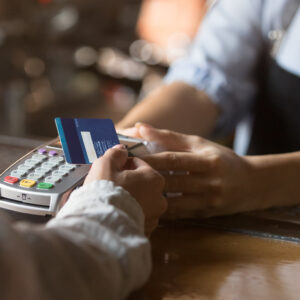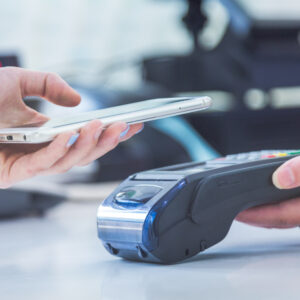The rise of online commerce has created fertile ground for scammers, and many payment processors still use outdated tools to stop them.
Fraud is no longer the work of individuals with stolen credit cards. It’s a billion-dollar ecosystem with software, specialists, and services for sale on the dark web. While most businesses focus on growth, fraudsters focus on invisibility. That’s why today’s attacks aren’t always obvious.
They blend in. They mimic your customers. And they operate under your radar.
Account Takeover Attacks
If someone hijacks your customer’s login, you’re not just facing a support ticket; you’re risking brand trust, chargebacks, and recurring fraud.
Account Takeover (ATO) fraud happens when criminals gain access to real user accounts using stolen credentials, brute force tactics, or phishing. Once inside, hackers change passwords, update shipping addresses, and place high-value orders without suspicion—because everything looks “normal” in the logs. It’s so common that up to 29% of people have suffered from ATO.
One merchant discovered a pattern: multiple luxury item orders from loyal customers with zero returns, only to be hit with chargebacks weeks later. A deeper audit revealed the real customers had been locked out of their accounts for days without realizing it.
Today’s ATO prevention isn’t just about strong passwords. It requires layered defenses like multi-factor authentication, device fingerprinting, and behavioral monitoring. More importantly, processors must be equipped to flag inconsistent login patterns and inform merchants in real time.
Synthetic Identity Fraud
Not all customers are real, and fake ones are the hardest to catch.
Synthetic identity fraud combines real and fictitious information to create believable fake profiles – and it’s estimated to lead to $23 billion in losses over the next 5 years.
A scammer might use a real Social Security number with a fake name, build a credit history, and then apply for merchant access or online accounts. Over time, they gain legitimacy until they strike with a high-ticket order or credit charge they never intend to repay.
This type of fraud often goes undetected because there’s no immediate victim. There’s no angry cardholder calling to dispute a charge. The only victim is the merchant left with a loss after a seemingly clean transaction disappears into the void.
It’s not enough to verify basic user fields. Platforms need to verify identity with triangulated signals, cross-device behavior, and fraud models that detect inconsistency in digital fingerprints and IP history.
Fake Account Creation and Loyalty Abuse
Not every new user is a good user. Surges in new accounts could be a sign you’re being targeted. Scammers create dozens, or hundreds, of fake accounts to exploit referral bonuses, discount codes, and loyalty programs. They might use bots, disposable emails, or stolen data to bypass normal filters.
In many cases, the goal isn’t to make purchases, with social media platforms also facing tons of fake accounts. In the first half of 2024, LinkedIn alone has to remove over 88 million fake accounts.
To stop it, businesses need stronger signup monitoring. Not just CAPTCHA, but behavioral analysis, IP trust scoring, and velocity rules that look at account behavior over time.
Card-Not-Present (CNP) Fraud
Online checkout is convenient for consumers, and for fraudsters, too.
CNP fraud happens when criminals use stolen card credentials to place online orders where the card doesn’t need to be physically presented. It’s so costly that CNP fraud led to over $30 billion in worldwide losses… in just 2024.
Because merchants can’t verify identity in person, they rely entirely on signals like billing address, CVV codes, and velocity monitoring. Unfortunately, that’s not always enough.
Key signs of CNP fraud include:
- Orders placed from one IP but shipped to different addresses
- Repeat purchases at odd hours from the same card number
- Sudden changes in buying behavior from existing users
Some merchants implement 3D Secure, AVS filters, or CVV matching, but many still leave gaps in their fraud prevention stack.
And when fraud does go through? The merchant eats the cost.
Processors must provide customizable rules and chargeback intelligence and not just generic filters to adapt to each merchant’s risk profile.
The Surge of Return Fraud
Return fraud doesn’t always look like fraud. Sometimes, it looks like a customer just “changed their mind.”
But in reality, some fraudsters game return policies, counterfeit receipts, and manipulate RMA systems to get refunds on items they never purchased or to return lower-value items than they ordered.
What’s worse, organized rings now target merchants with large, automated return scams. In one example, a fraudster used a fake brand account to process dozens of refunds before being flagged. The merchant lost over $30,000 in product and restocking costs.
Some return fraud tactics to watch out for:
- Frequent returners who always claim the item was “not received”
- Accounts requesting returns from multiple IPs or devices
- Refunds issued to cards different from the one used at checkout
A generous return policy doesn’t have to be a liability, but it does require smart backend tracking and risk tools.
Why Luqra Makes Fraud Harder to Pull Off
Most processors treat fraud like a box to check. Luqra builds anti-fraud thinking into everything we do, from onboarding logic to chargeback prevention and checkout configuration.
Our systems are designed to recognize suspicious behavior, flag potential abuse, and help merchants adapt to new threats without creating friction for good customers.
More importantly, we treat fraud like a shared responsibility. Our team works with merchants to identify high-risk patterns, explain dispute outcomes, and design better defenses. And because we understand that not all fraud is black and white, we use TrueRisk to score threats based on context and not just outdated rules.
Other processors wait until the fraud hits. We help stop it before it starts.





